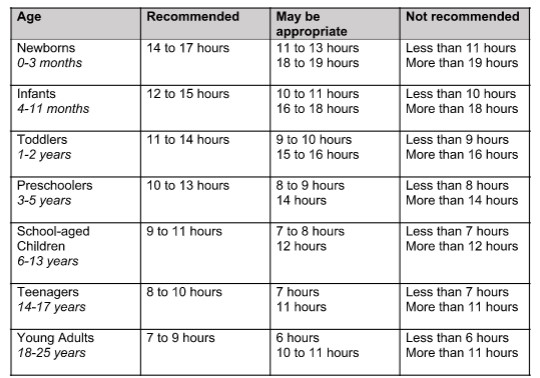Snack & Food Preparation in the Montessori Classroom

Snack is a pretty big deal at our school. Many of the teachers consider themselves “foodies” and have spent a great deal of time developing seasonal and healthy menus. Incorporating crock pots, rice cookers, blenders, and toaster ovens has widened our variety and helped to keep things fresh.
In a Montessori classroom snack is self-serve and available throughout the whole work period. Snack is eaten at a designated snack table that seats three or four. Having limited space encourages the children to practice their patience along with being mindful of others waiting their turn. Cards with numbers are placed next to each snack item to determine the serving size. Older children often help younger children count out the correct number.
A few years ago we introduced snack rocks in the Children’s House classrooms. The children find the rock with their name on a tray and place it in the spot they would like to save. We found this eliminated the occasional conflict if there were multiple children wanting snack at the same time. After washing their hands they return to the snack area to serve themselves using child sized tongs and serving utensils. Polite manners and pleasant conversations are encouraged. When the children are done with snack they independently clear their place, wash their dishes in the dish washing work, and return their rock to the “done” basket.

There are many benefits to involving children in food prep. Even the pickiest of eaters have been known to be more willing to try things when they have had a hand in preparing it. These works also help develop fine motor skills and build coordination as well as increase knowledge of nutrition, science, math, and reading.
We have found that keeping food prep set at a stationary table is best. When arranging the classrooms we kept in mind the distance of this table to the handwashing work.
We have acquired a stock of appropriately sized plates, bowls, cups, and utensils for these works. Like the other works in a Montessori Room these dishes are made of glass or ceramic, so we generally try to buy a few extra in case any do break over time. Each morning the work is prepared with all the components the children need to be independent.
Here is a breakdown of how the work is presented for the three-six year old classrooms:
1. Self-Preparation: Another use for our snack rocks! Upon choosing to do the work a child locates their rock and places it on the food prep table. This signifies to the other children that this work is being used.
2. Self-care: Next is hand washing. In our classrooms the children use the handwashing pitcher and basin before beginning the food prep work. This is where the rock on the work table is so beneficial. Generally, in a Montessori classroom a child’s independent work is signified by a rug or individual table. Being that food preparation has so many steps away from the stationary table the snack rocks seem to help keep things clear.
3. Food Preparation: When presented the teachers are sure to emphasize safe and healthy practices when using shared food. (i.e. being mindful of hand placement when cutting, not licking fingers or utensils after use, etc…)
4. Serving and Enjoying: For some of the food prep activities the child has the choice to eat their prepared snack independently or politely serve their classmates or class visitors. We introduced using toothpicks for each serving to avoid spreading extra germs ?
5. Clean Up: Once finished the children wash their dishes, reset the food prep table, and return their snack rock.


Apple Slicing: We have found that cutting the apples in thin disks makes it easier for the children to slice through independently and still provides the satisfaction of removing the core and seeds. This also gives a great look at the star formation in the core! We also began storing the apples in water with a little splash of lemon juice to stop them from browning.
Banana Cutting: We use half a banana per student. We have tried the banana cutting tools in the past but found that it did a lot more squishing than cutting. It also took away from the Montessori method of allowing children to work with real life everyday objects, like a knife. Something generally considered that should be kept away from children.
Pickle Cutting: This work is very similar to banana cutting but requires a bit more muscle. It also brings in a very different gustatory experience compared to apples and bananas.
Strawberry Slicing: A fantastic opportunity to discuss seeds! We teach the children to remove the leaves prior to cutting with a knife or crinkle cut blade (there are a few different styles available). I have looked into purchases a strawberry slicing tool but was unsure about the blades and if it would have the same difficulties as we have had with the banana slicer.
Jam/Cream Cheese Spreading: Spreading can be done on crackers, bread, miniature bagels, etc. Cheese knives are great for this and often you can find a variety of styles in thrift stores for less than a dollar.
Cucumber Peeling & Slicing: Each summer we plant a vegetable garden as part of our summer camp. In the fall the children pick cucumbers from the garden to use for this work. They take such pride in being part of the whole life cycle! There are a variety of kid safe peelers you can buy ranging from ones with safety guards to ones with a ceramic blade.
“Spritzer” Mixing: We did this as for the first time this holiday season and it was a huge hit. Using a measuring cup the children combined seltzer water and cranberry juice to make a spritzer. They also had the option of tonging in 2 fresh cranberries. Being a bit more complicated of a food prep lesson we felt it was best (and most festive!) to add this work in mid-year.
Squeezing Fresh Orange Juice: We were gifted this wonderful juicing tool from a parent a few years ago and it works great! The juice flows through holes in the bottom and into an attached pitcher. The pour spout is something the children are familiar with and it keeps the work area clean. The pitcher also has measurements on the side. The children love seeing how much juice they can get.
Check out our Pinterest for tons of other great food prep ideas!



